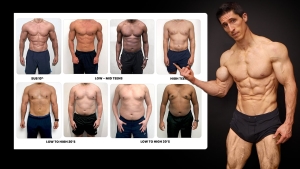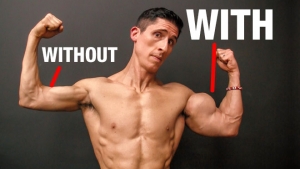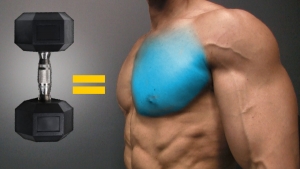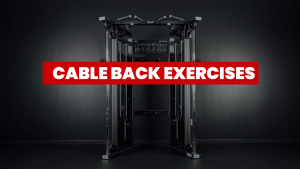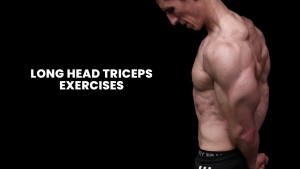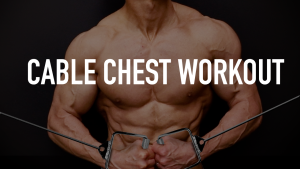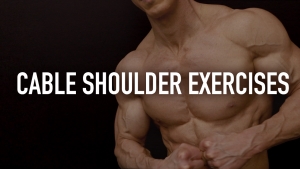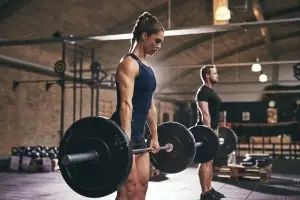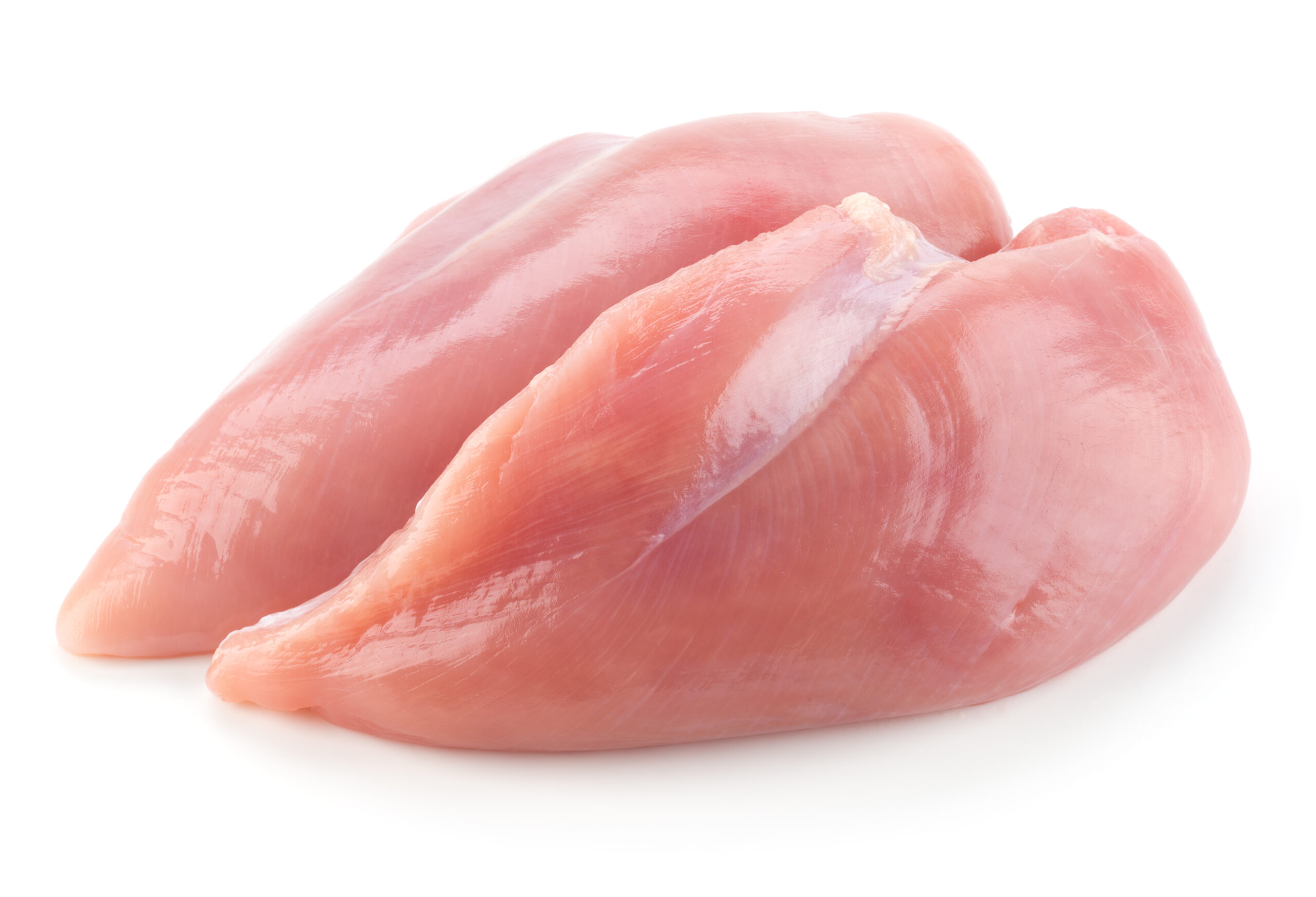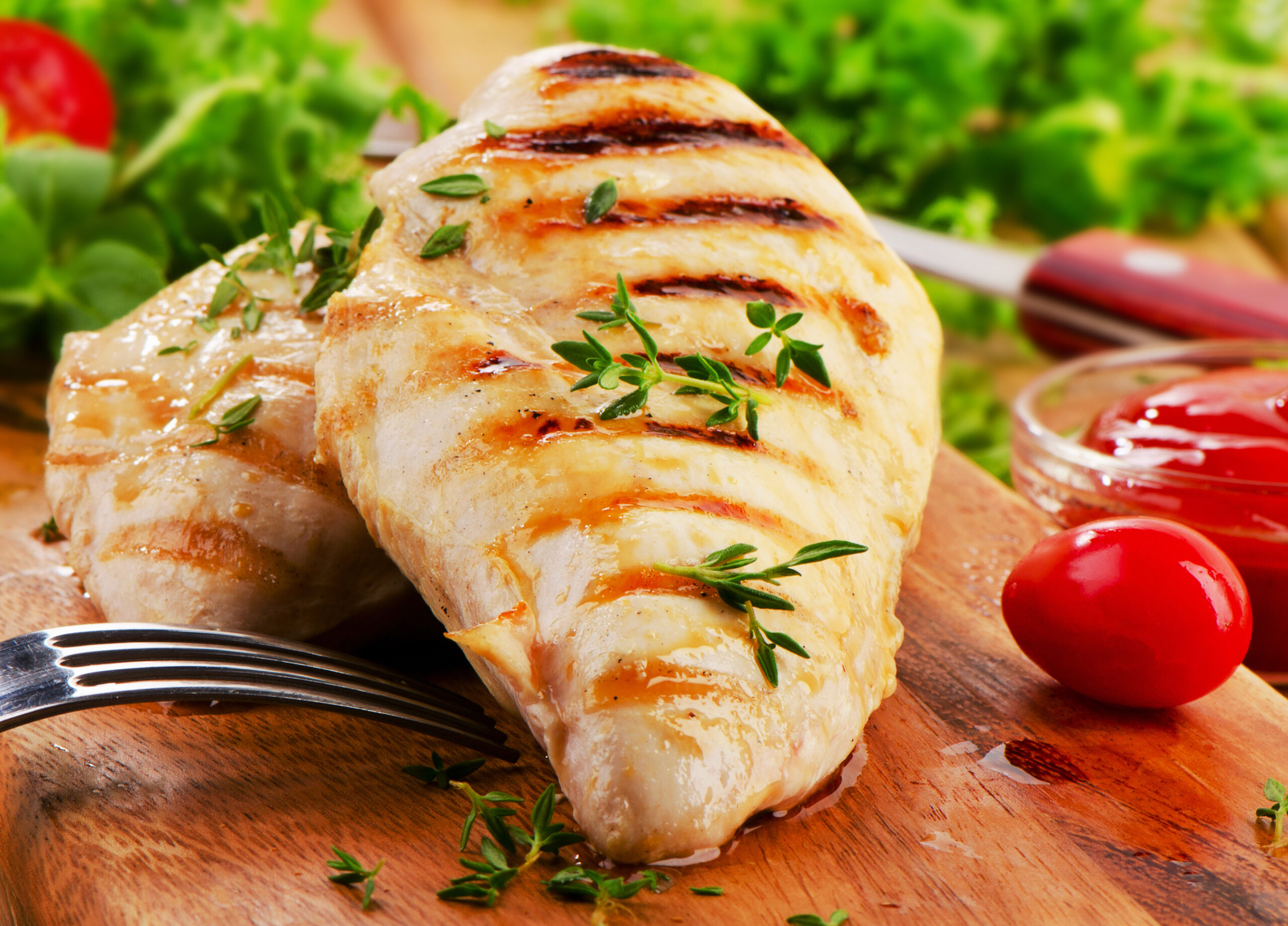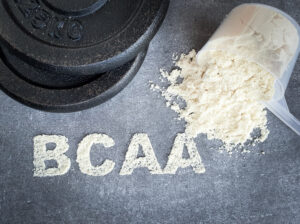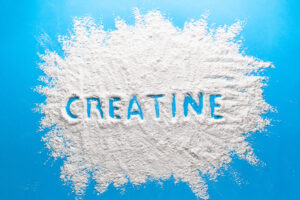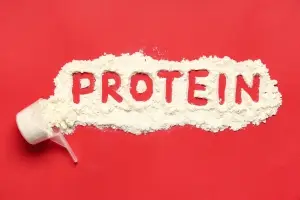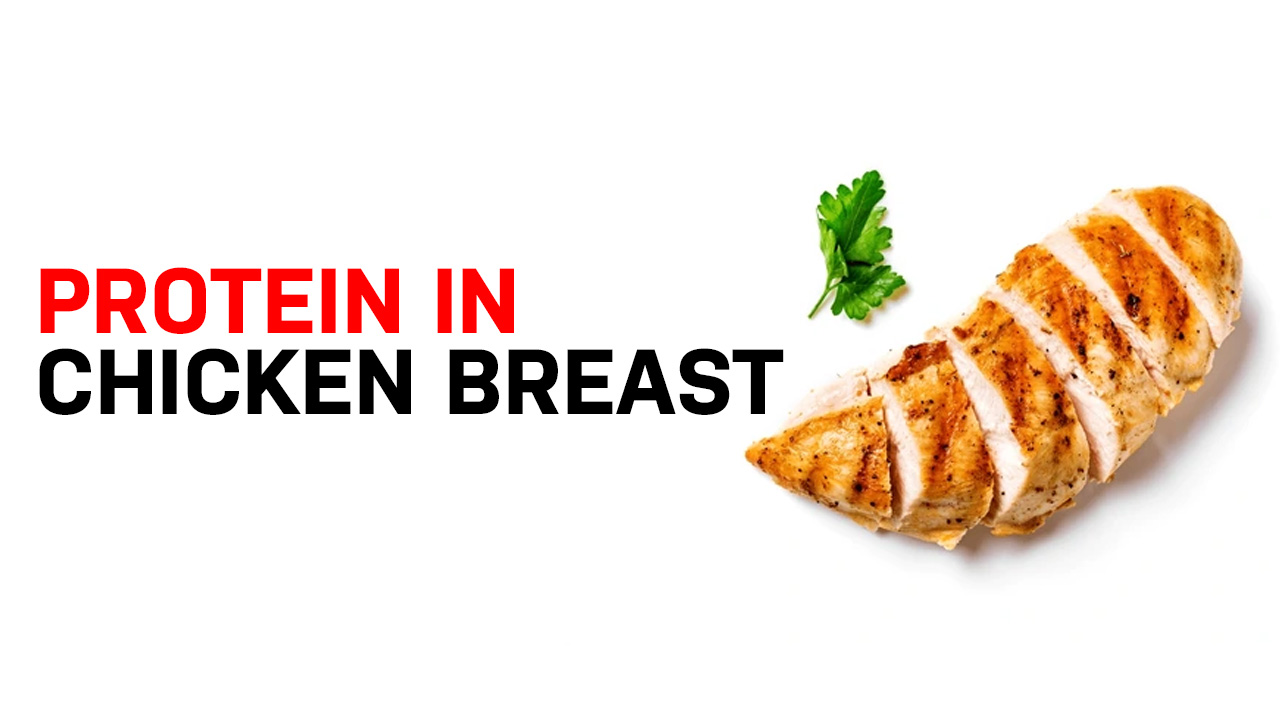
WHY EAT CHICKEN BREAST?
Why is that?
Each chicken breast contains amino acids to support muscle mass, immune function, and even bone mineral density.
It doesn’t matter if you’re training for size, strength, or better body composition, lean chicken breasts are the perfect high-protein, low-fat, and low-carb meal option.
But not all chicken meat is created equal.
If you’re getting your chicken intake from fried buffalo wings, chicken drumsticks, or other bar food, you’re doing it wrong.
Sure, those options taste great, but they carry more fat and calories, especially when you start frying chicken or grabbing it from a fast-food restaurant.
Let’s break down the nutritional value of chicken breast, how much protein you’re really getting, and how it compares to other sources in a high-protein diet.
PROTEIN IN CHICKEN BREAST (BY THE NUMBERS)
Let’s jump right into the big question: how much protein is in chicken breast?
If you’re serious about building muscle, you don’t guess your protein intake. You measure it.
Eyeballing portion size might work for the guy who has been religiously eating clean for years, but if you’re new to nutrition, it’s best to get into the habit of measuring.
From raw chicken ready for meal prep to that perfectly cooked chicken breast pulled from the oven, here are the numbers you need to know.
Here’s the breakdown of protein intake for a cooked, skinless chicken breast:
- Per 100g (about 3.5 oz): ~31g protein
- Per ounce: ~8g protein
- Typical full breast (~170g or 6 oz): ~50 to 55g protein
That’s leaner than chicken thighs, cleaner than chicken wings, and delivers more muscle-building protein chains per calorie than even premium wagyu steak or beef chuck.
RAW VS. COOKED: WHY THE NUMBERS CHANGE
Let’s address a common question: does the weight difference in raw vs. cooked chicken affect protein content?
The protein content in cooked chicken breast doesn’t disappear but water weight does. That’s why raw chicken weighs more than the same piece after baking chicken or grilling.
Cooking drives out water, making the protein more concentrated by weight.
For example:
- 4 oz raw chicken breast (~113 g) = ~24 g protein
- 4 oz cooked chicken breast (~85 g after water loss) = ~26–27 g protein
TIPS FOR FOOD SAFETY
Building muscle isn’t just about hitting your protein targets. It’s about making sure the food you eat helps you, not sends you to the ER.
Poor cooking or sloppy prep with chicken can lead to foodborne illnesses that will tank your training.
Here’s how to keep your chicken breast safe and packed with its full nutritional value:
USE A FOOD THERMOMETER
Cook chicken breast and measure it with a food thermometer to an internal temperature of 165°F to kill harmful bacteria without overcooking.
This keeps the meat tender while protecting the amino acids your body needs for recovery.
AVOID CROSS-CONTAMINATION
Raw chicken juices can spread bacteria to cutting boards, knives, and countertops.
Keep raw and cooked food separate, and wash everything, including your hands, before touching anything else in the kitchen.
THAW THE RIGHT WAY
Forget leaving chicken on the counter all day.
Use safe thawing methods: in the fridge overnight, sealed in cold water (change water every 30 minutes), or in the microwave if cooking immediately.
This prevents bacteria growth while keeping the meat’s total health essentials intact.
MIND THE COOKING METHOD
Whether you’re baking chicken, grilling, or air frying, keep the cooking temperature consistent to preserve texture and nutrient quality.
Too high and you dry it out. Too low and you risk undercooking.
STORE IT SAFELY
Refrigerate cooked chicken within 2 hours. If you’re meal-prepping for the week, store portions in airtight containers to protect the protein quality and avoid spoilage.
CHICKEN BREAST BENEFITS
When it comes to building muscle, chicken breast isn’t just another item on your grocery list. It should be your go-to option for poultry products.
Chicken breast is low in fat, high in protein, and packed with the essential amino acids your body needs to recover, grow, and stay lean.
It fits clean eating plans, supports strength goals, and makes portion control simple.
That’s why it shows up in the diets of athletes and fitness professionals who train hard and eat smart.
If you’re serious about results, this isn’t just a food choice. It’s a strategy. Here’s why it needs to become a part of your meal plan:
HIGH PROTEIN, LOW FAT
Chicken breast delivers one of the best protein-to-calorie ratios you can get from whole food.
It’s leaner than chicken thighs, wings, or drumsticks, meaning you can get the muscle-building protein you need without loading up on excess calories.
That’s a win for weight management and body composition goals.
COMPLETE PROTEIN FOR RECOVERY AND GROWTH
Unlike some plant-based options like nuts and seeds, chicken breast is a complete protein. That means it contains all nine essential amino acids that your body can’t make on its own.
These amino acids drive muscle repair, strength gains, and recovery.
Bioactive peptides, some of which are released during enzymatic hydrolysis in digestion, support these processes by enhancing nutrient absorption, reducing inflammation, and promoting overall recovery.
You’ll even find hydrolyzed chicken protein in some supplements because of how efficient these protein chains are for muscle growth.
NUTRIENT DENSITY BEYOND PROTEIN
The health benefits of chicken breast go beyond muscle. It’s a solid source of vitamins and minerals that support your immune system, help maintain energy levels, and even play a role in joint and bone health.
Chicken breast provides key nutrients like vitamin B6 and Niacin to support metabolism and recovery, along with selenium for immune defense and phosphorus for strong bones.
These are the kinds of total health essentials that help your body train harder, recover faster, and stay in the game longer.
LOW-CALORIE, HIGH-VOLUME EATING
Because chicken breast is so low in fat and calories, you can eat more of it for the same calorie load as fattier meats.
That’s a huge advantage when you want to stay full and satisfied.
Pair it with vegetables or even a clean pasta dish, and you’ve got a filling meal that won’t wreck your macros.
VERSATILITY IN THE KITCHEN
From grilled strips tossed into a salad to shredded chicken mixed with chicken stock for a soup, it’s hard to beat the versatility.
Sure, you can enjoy rich dishes like chicken tikka masala or cook down chicken bones for broth, but the real key is having a clean, ready-to-eat protein source you can adapt to any recipe.
CHICKEN BREAST VS. OTHER PROTEIN SOURCES
If you’re training hard, eating smart, and trying to build lean muscle without excess fat, your protein source matters just as much as how many grams you’re getting.
Here’s the head-to-head breakdown per 100 grams of different protein sources. We’re comparing apples to apples (not apples to apple cider vinegar). [1]
| Protein Source | Protein (g) | Calories |
| Chicken Breast | ~31g | ~165 |
| Ground Beef (90/10) | ~26g | ~250 |
| Ground Turkey (93/7) | ~29g | ~180 |
| Salmon | ~25g | ~200 |
| Tuna (canned in water) | ~23g | ~110 |
| Eggs (2 large)** | ~12g | ~140 |
| Egg Whites | ~11g | ~50 |
| Whey Protein (1 scoop)** | ~25g | ~120–130 |
| Greek Yogurt (plain, 2%) | ~10g | ~100 |
| Cottage Cheese (2% fat) | ~11g | ~90 |
| Tofu (firm) | ~10g | ~140 |
| Tempeh | ~19g | ~195 |
| Lentils (cooked) | ~9g | ~115 |
| Chickpeas (cooked) | ~8.5g | ~164 |
| Black Beans (cooked) | ~8g | ~140 |
| Quinoa (cooked) | ~4g | ~120 |
| Mixed Nuts (avg) | ~5g | ~170 |
| Chia Seeds | ~5g | ~160 |
Chicken breast gives you more protein per calorie than fattier meats like ground beef or calorie-dense sources like nuts and seeds.
Compared to plant-based proteins like lentils or tofu, it has more of the essential amino acids your body needs for growth and recovery.
It’s also free from the bloating or digestive issues some people experience with protein powders or high-fiber legumes.
And let’s be honest: slapping a grilled chicken breast into your meal prep is a lot more effective than drowning a salad in oil and calling it a high-protein fast food hack.
HITTING YOUR PROTEIN GOALS
You don’t build muscle with occasional good meals. You build it with consistent, daily protein. That means the right amount at the right times.
Problem is that most people fall short.
They eat a high-protein dinner, maybe a scoop of whey after training, and think that’s enough. It’s not.
If you want to grow, recover faster, and see the results of your hard work in the gym, you need to distribute your protein throughout the day.
Chicken breast is one of the best tools for doing exactly that.
THE 30-GRAM RULE
If you’re training hard and pushing your body, protein isn’t optional. It’s a requirement.
Most people should aim for 0.8 to 1.2 grams of protein per pound of bodyweight, depending on how active they are and what their goals are.
Trying to build muscle or train at high intensity? You’re at the higher end.
Just looking to maintain? You might fall closer to the lower end.
That means:
- A 150-pound athlete needs around 120 to 180 grams of protein daily.
- A 180-pound lifter should aim for 145 to 215 grams.
Sound like a lot? It is… if you’re trying to cram it all into two meals and a protein shake.
But if you break it up across three to five meals, you’re looking at 30 to 40 grams of protein per meal.
That’s a lot more doable and way more effective.
Spreading your protein intake throughout the day does two key things:
It helps maximize muscle protein synthesis, the process that turns training into actual gains.
And it keeps your body in a consistent anabolic state, which means better recovery, less muscle breakdown, and more growth.
HOW CHICKEN BREAST GETS YOU THERE
Here’s why chicken breast is your go-to weapon for hitting your per-meal protein target: it delivers a full serving of high-quality protein in one shot without messing up your macros.
Let’s break it down:
- 4 oz cooked chicken breast = ~30g protein
- 6 oz cooked = ~45g protein
- 8 oz cooked = ~60g protein
That means just one portion can knock out an entire meal’s worth of protein and still leave plenty of room on your plate (and in your calorie budget) for healthy carbs, fats, and fiber.
It’s lean, it’s dense, and it works for nearly every goal. It’s also one of the most versatile proteins out there. You can drop it into almost any dish and still hit your target:
- Dice it into omelets or egg scrambles
- Throw it on salads for a power-packed lunch
- Build high-protein rice bowls or burrito bowls
- Stir-fry it with veggies and garlic for a clean, fast dinner
- Wrap it in a tortilla for an on-the-go meal
- Eat it cold out of a container straight from the fridge, no microwave needed
SAMPLE DAILY PLAN
Hitting your daily protein target is about consistency across the day. Here’s what a smart, muscle-focused meal plan looks like using chicken breast as the core protein source.
This example totals around 150 grams of protein, which is ideal for someone in the 150 to 180-pound range who is training consistently.
Meal 1 (Breakfast): Start strong with a combo of protein and healthy fats. Scramble two whole eggs with about 3 oz of chopped chicken breast, giving you a solid 30 grams of protein to kick off your day. It’s easy to prep, fills you up, and sets the tone for consistent nutrition.
Meal 2 (Lunch): Keep it simple and effective. A portion of 5 oz grilled chicken breast over rice and vegetables gives you about 40 grams of protein. This is a clean, balanced meal that fuels your afternoon training or work session without weighing you down.
Meal 3 (Snack or Post-Workout): A quick combo of Greek yogurt and one scoop of whey protein adds another 35 grams of protein with minimal prep. It’s fast-digesting, ideal post-workout, and helps bridge the gap between lunch and dinner without reaching for junk food.
Meal 4 (Dinner): Wrap up the day with 6 oz of grilled chicken breast served alongside roasted potatoes or another complex carb. This hits around 45 grams of protein, giving your body the tools it needs to recover and rebuild overnight.
CHICKEN FOR GAINS: COMMON MISTAKES
Chicken breast is one of the best tools in your nutrition arsenal but like any tool, it only works if you know how to use it.
Screw it up, and you’ll miss your macros, blow your recovery, or just burn out and give up.
Here are the biggest mistakes guys make when trying to build muscle with chicken:
RELYING ON CHICKEN BREAST ALONE
Chicken gives you the protein, but not the full recovery package. If you’re eating chicken breast by itself and calling it a meal, you’re missing out.
Your body needs carbs to replenish glycogen and healthy fats to support hormone function, especially if you’re training hard.
Pair your chicken with rice, potatoes, avocado, olive oil, or a mix of carbs and fats based on your goal. Protein is only part of the equation.
OVERCOOKING IT INTO A RUBBER TIRE
Dry, bland, overcooked chicken is one of the fastest ways to fall off your plan. If it tastes like cardboard, you won’t eat it and if you’re not eating it, you’re not building muscle.
Learn how to cook it right. Grill it, bake it, pan-sear it. Just keep it juicy. Use a food thermometer and pull it at 165°F.
Add flavor with herbs, spices, citrus, and low-calorie marinades.
NOT WEIGHING YOUR FOOD
Here’s a rookie mistake: thinking 6 oz of raw chicken is the same as 6 oz of cooked chicken. It’s not.
Chicken loses water as it cooks, so the weight and the numbers change.
Always weigh your food after cooking if that’s how you’re tracking. Be consistent with your method so you’re not under- or overestimating your intake.
EATING CHICKEN NUGGETS (AND CALLING IT PROTEIN)
This one’s simple: chicken nuggets don’t count. Neither does that deep-fried sandwich from the fast-food drive thru. Sure, there’s some chicken in there, but it’s buried under layers of oil, breading, and garbage you can’t pronounce.
If you want to build muscle and stay lean, eat real food. Chicken breast, chicken thighs, and chicken legs cooked clean, portioned right, and paired with foods that fuel performance.
Nuggets are bar food, not a recovery strategy.
Chicken breast is the undisputed king of lean protein in the fitness world.
And while protein powders, plant-based protein, and even trendy cuts like wagyu steak or beef chuck all have their place, chicken breast remains one of the most efficient tools for building lean mass and managing weight.
It’s simple, effective, and always ready to do the heavy lifting on your plate just like you should be doing in the gym.
Check out our complete line of ATHLEAN-RX Supplements and find the best training program for you based on your fitness level and goals.
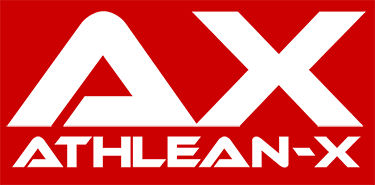
- Chicken breast is a complete protein with all 9 essential amino acids.
- It’s perfect for cutting, bulking, or maintenance so long as you adjust your intake of carbs and fats.
- By far, chicken breast outperforms other protein sources in protein-to-calorie ratio.
- 100 grams of cooked chicken breast delivers ~31g of protein with minimal fat and one full breast (6 oz) packs ~50–55g of protein, ideal for hitting per-meal targets.
- Want to make sure you hit your daily protein goals? Aim for 0.8 to 1.2 grams per pound of bodyweight.
- Be sure to spread your protein intake across the day with 30–40g per meal to maximize muscle growth.
- But don’t rely on chicken alone. Pair with carbs and healthy fats for full recovery.
- Also, skip the nuggets. Real chicken, cooked clean, is what builds lean mass.
PROTEIN IN CHICKEN BREAST FAQS
You’re getting about 60 grams of high-quality, complete protein from 8 ounces of cooked chicken breast.
That’s a massive chunk of your daily protein target, especially if you're aiming for 120 to 180 grams per day, depending on your weight and training intensity.
Chicken breast delivers all nine essential amino acids with minimal fat, low calories, and no fluff.
Compare that to fatty cuts of beef, greasy fast food, or “high-protein” processed snacks, and it’s clear why chicken breast is still the gold standard for muscle-building meals.
If you're trying to hit your daily goal with fewer meals (e.g., three meals instead of five), an 8-ounce portion like this is a smart, strategic choice.
Just make sure you balance it with some carbs and healthy fats to support recovery and hormone health.
Roughly 30 grams of protein and for most people, that’s the sweet spot per meal.
It’s enough to spike muscle protein synthesis, which is your body’s signal to start repairing and building new muscle tissue.
The key is consistency. Hitting 30 grams once a day doesn’t cut it. You want 30–40 grams per meal, spread across 3 to 5 meals, to stay in an anabolic state and make sure you’re feeding your muscles around the clock.
With 4 ounces of chicken breast, you can build your meal around it and know that you're giving your body exactly what it needs to recover and grow.
Toss it into a salad, wrap it in a tortilla, serve it with rice or sweet potatoes. Just make sure to eat it regularly.
Not even close. One average chicken breast (around 6–8 oz cooked) gives you about 50 to 60 grams of protein, which is only half of what you need, if that, depending on your size and training goals.
If you weigh 180 pounds and you’re training hard, you should be shooting for 145 to 215 grams of protein per day (using the recommended range of 0.8 to 1.2g per pound of bodyweight).
Put simply, one chicken breast won’t cut it.
And no, having one big meal with a ton of protein doesn't make up for skipping it the rest of the day.
Your body can only use so much protein at once for muscle repair. The rest? It gets burned for energy or stored.
The smarter strategy is to spread that protein across the day, keep meals balanced, and stay consistent.
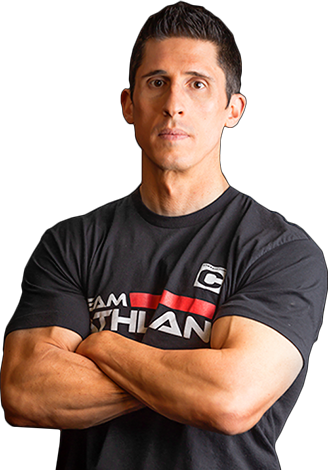
Jeff Cavaliere M.S.P.T, CSCS
Jeff Cavaliere is a Physical Therapist, Strength Coach and creator of the ATHLEAN-X Training Programs and ATHLEAN-Rx Supplements. He has a Masters in Physical Therapy (MSPT) and has worked as Head Physical Therapist for the New York Mets, as well as training many elite professional athletes in Major League Baseball, NFL, MMA and professional wrestling. His programs produce “next level” achievements in muscle size, strength and performance for professional athletes and anyone looking to build a muscular athletic physique.

